Cauldron
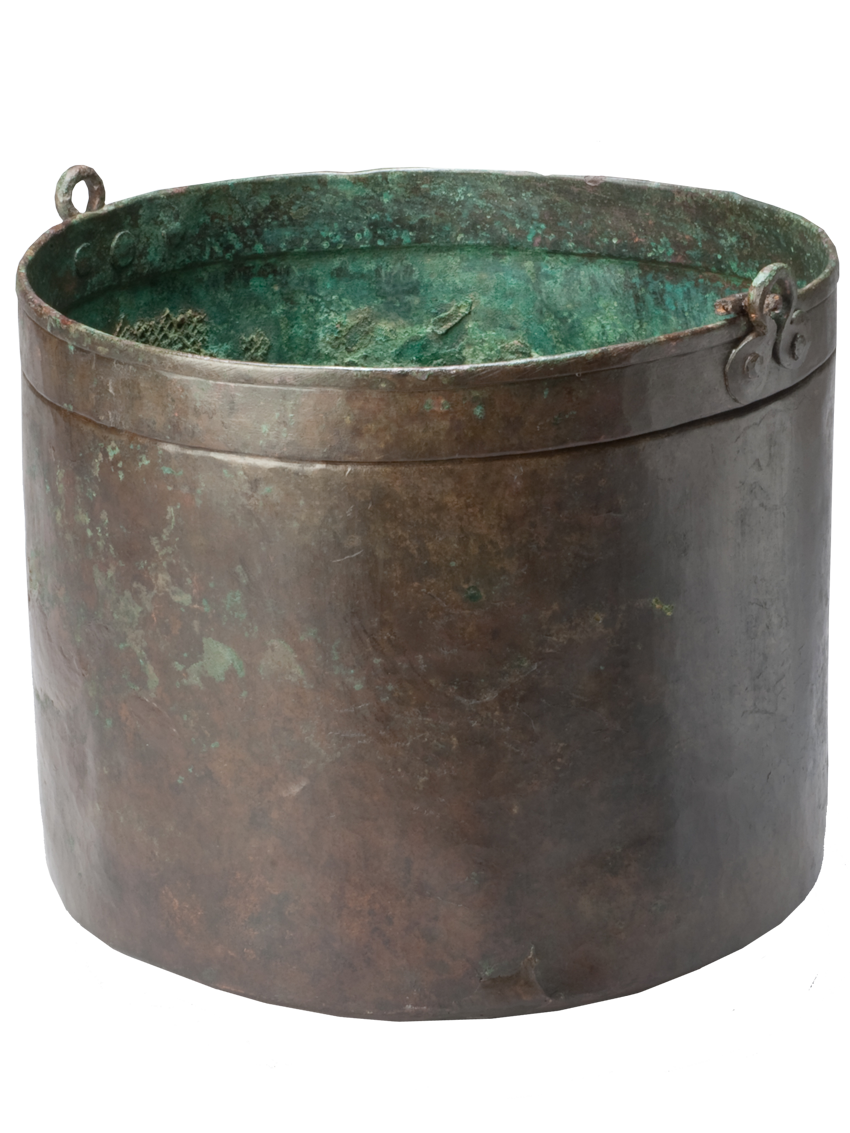
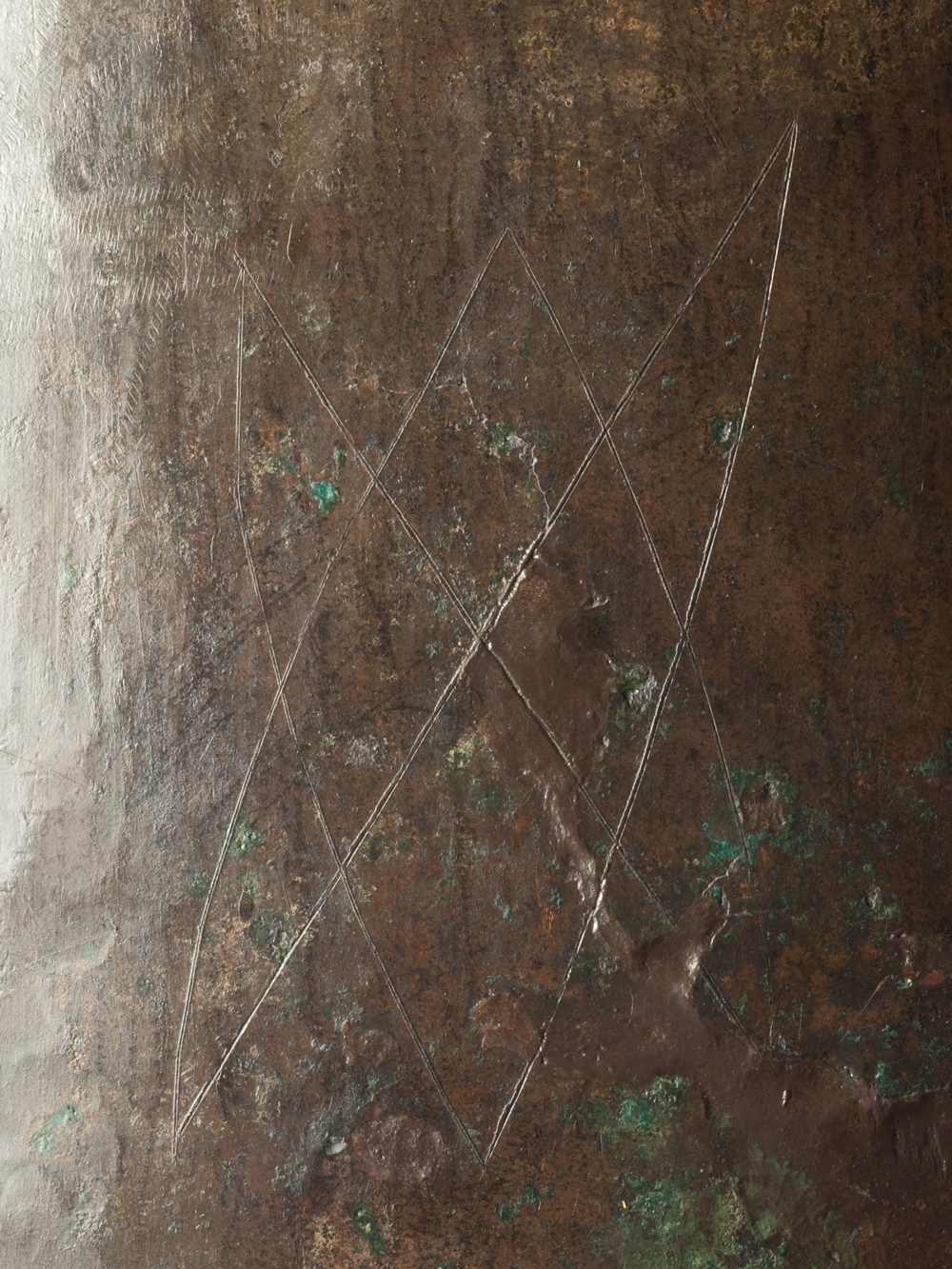
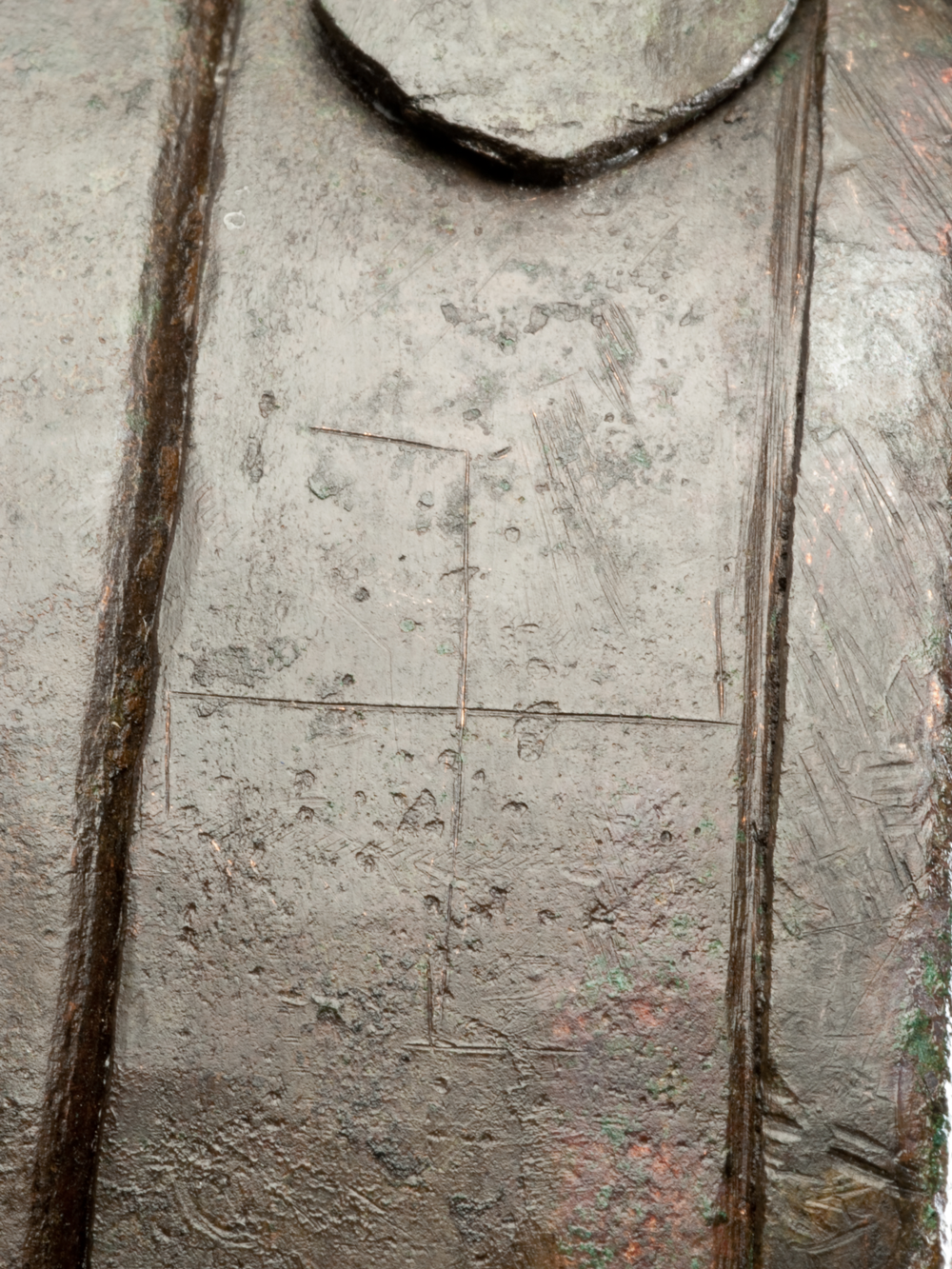
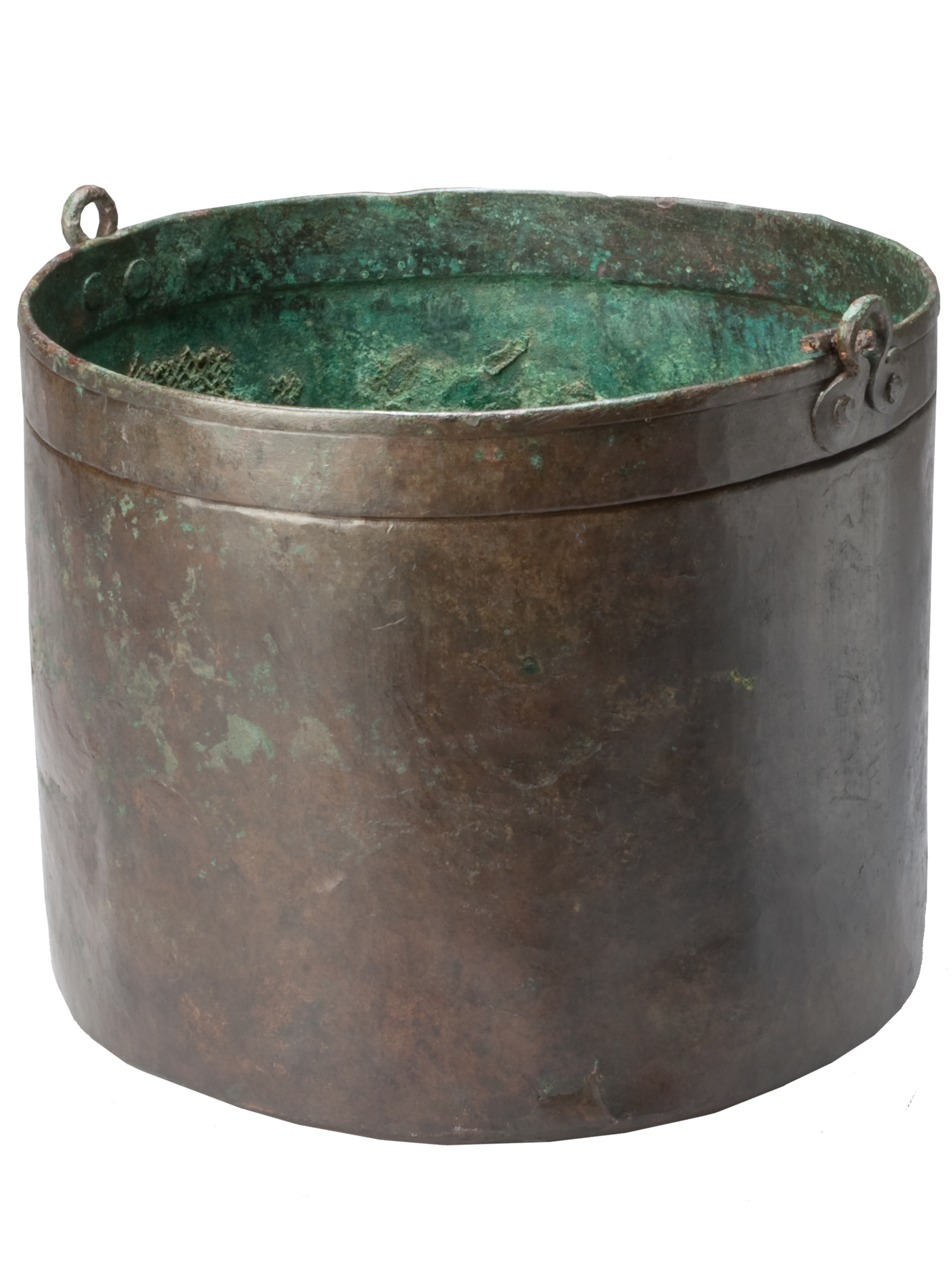
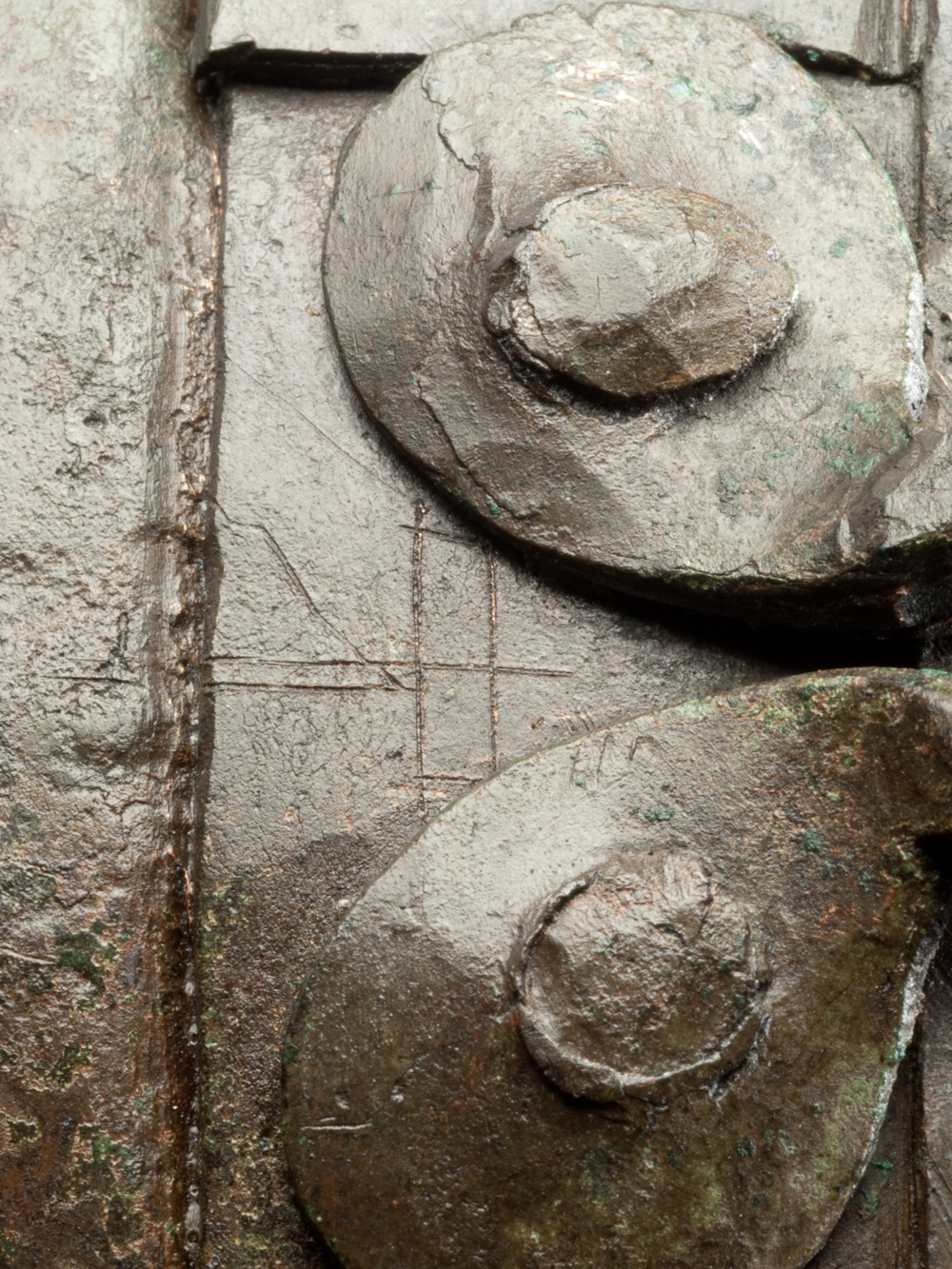
The cauldron is a household item used for cooking. At the same time, there are known finds of cauldrons that were a part of military equipment in the rich Scandinavian burials of soldiers-vigilantes (druzhinniks).
This one was discovered during excavations of the Souprouty hillfort, located in the upper reaches of the Oka and Don watershed on the Don river route.
On the body are graffiti in shape of interlaced triangles; on the rim is a swastika and a T-shaped insignia (stylized hammer of Thor, the Scandinavian God of Thunder), as well as a number of vertical notches.
Settlement of the Slavs in Eastern Europe was going along the rivers, which served as routes for internal communications and for communication with the outside world as well.
The Don Route to the East, into lands of the Arab Caliphate was formed in the IX century. It ran along the Don River. It was the time when Eastern and Northern Europe in exchange for furs and slaves received Eastern goods, and Arab coins-dirhams, which served a kind of international currency. The lower flow of the Don River fell under control of the Khazarian Khaganate, which was the largest intermediary in trade between Europe and Asia. The territory of the Oka and Don River watershed and control over the river routes of this section was carried out by the Slavic population. The fact is confirmed by location of settlements; the distance between which is 20-30 kilometers (which is approximately a length of a day's March).
The hillfort Souprouty remains the brightest of all known archaeological sites in the area. The village was located at the junction of interests of various political forces, on the border of spheres of influence of the Varangian squads and the Khazarians. Location of the settlement allowed to controlling all offshoots of the trade route. The finds on the settlement ground belong to different cultural traditions that definitely indicate ethnical diversity of population. Although the major part of those living was Slavic, which is confirmed by the ethnically distinct women’s jewels – ray temple rings, some of the inhabitants were from Scandinavia and the territory of the Khazar Khaganate.
The settlement perished in the beginning of the X century as a result of a military raid and assault. Presumably all inhabitants were killed: during excavations, were found numerous skeletons scattered throughout the settlement. Some skeletons were found in the recessed parts of buildings: probably these people died first, and their bodies were put in cellars in hope that they would be buried later. However, there was no one to bury the dead: everyone was massacred. After such devastation the settlement was not rebuilt again.




